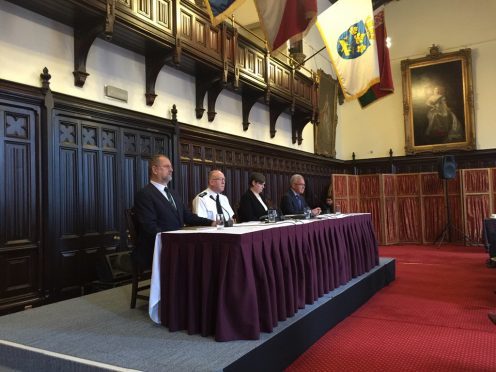The man who led the investigation into the tragic death of Bailey Gwynne admitted he was frustrated the bulk of his report had been kept secret for now.
Andrew Lowe’s full account of the background to the killing runs to about 17,000 words – based on 45 hours of interviews with 42 people.
About 10 of those came forward after an appeal printed in the Press and Journal.
But Aberdeen City Council has published only his key findings and recommendations, blaming “legal and data protection issues”.
It says it first needs to secure permission from those named in the report – and chief executive Angela Scott was unable to say how long that might take.
The absence of the bulk of the findings left an increasingly frustrated Mr Lowe repeatedly forced to duck questions at a press conference.
“I wish I had the report before me so that you could form your views about that,” he said.
“But I am not in a position to go into any detail about any other family members. It is not an unfair question but you have my answer.
“It is a frustration for me as well because I would like you to see it.”
He insisted the council, Police Scotland and NHS Grampian had behaved “honourably” and not sought to revise his conclusion and recommendations – which were published in full.
They “sought to give me every information and help me to fact check and explore different avenues”, he said.
Ms Scott said the council remained “committed” to full publication and had started a co-ordinated effort to resolve the blockages.
Pressed by the Press and Journal over when the findings would be released, Ms Scott gave no assurance it would be this year.
She said: “Our intention is to seek all those permissions.
“I just remind colleagues that there are children that were interviewed as part of this process. Bailey’s family was as well.
“So we need to be respectful of how difficult the situation is for all the families and all the children.
“We will work as speedily as we can to secure those permissions and as soon as we have those permissions we will be able to look to put the report into the public domain.”
